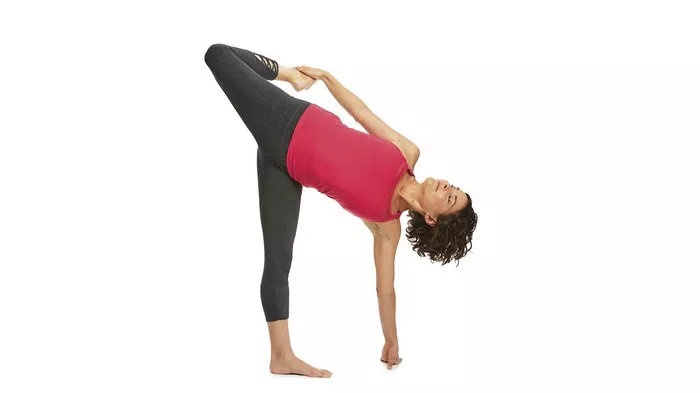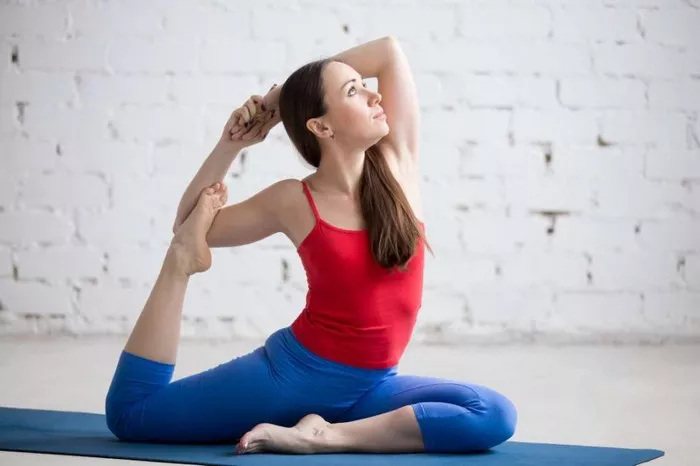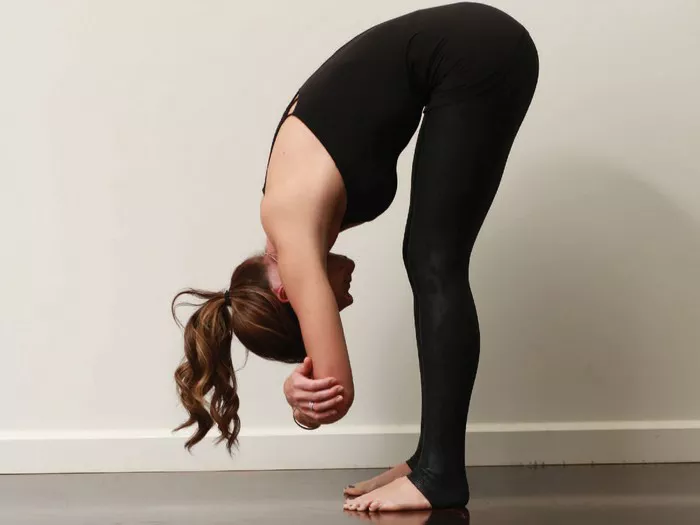In the world of yoga, Ardha Chandra Chapasana, commonly known as Sugarcane Pose, stands out as a graceful and challenging posture that offers a myriad of physical and mental benefits. Derived from the Sanskrit words “Ardha” (half), “Chandra” (moon), and “Chapasana” (sugarcane), this pose embodies strength, balance, and flexibility. As practitioners delve into its intricacies, they unlock not only physical prowess but also a deeper connection to their breath and inner focus. In this comprehensive guide, we will explore step-by-step instructions, modifications, benefits, muscles worked, precautions, tips, variations, and suggested transitions for Ardha Chandra Chapasana.
Step-by-Step Instructions
1. Start in Mountain Pose: Stand tall with your feet hip-width apart, arms by your sides, and gaze forward.
2. Shift Weight to One Leg: Transfer your weight onto your left foot while keeping a slight bend in the knee.
3. Engage the Core: Draw your navel towards your spine to stabilize your torso.
4. Bend the Right Knee: Lift your right foot off the ground and bring the heel towards your right glute.
5. Grasp the Inner Right Foot: Reach your right hand back and grab the inner arch of your right foot or ankle.
6. Extend the Left Arm Up: Inhale deeply and lift your left arm towards the sky, keeping it parallel to the ground.
7. Arch Backwards Gently: As you exhale, gently arch your spine, lifting your right thigh and kicking your foot into your hand.
8. Find Balance: Keep your gaze steady and find a focal point to aid in balance.
9. Hold and Breathe: Maintain the pose for 3-5 breaths, breathing deeply and evenly.
10. Release with Control: Slowly release the right foot and lower the left arm back down to the sides.
11. Return to Mountain Pose: Stand tall and ground through both feet before repeating on the opposite side.
Modifications
- For Beginners: If reaching the foot is challenging, use a yoga strap looped around the foot and hold onto the strap instead. Focus on maintaining balance and gradually work towards grasping the foot.
- For Limitations: Individuals with knee or hip issues can perform a modified version by keeping the lifted knee bent at a 90-degree angle instead of extending it fully. This reduces strain on the joints while still engaging the muscles.
- For Deeper Stretch: To deepen the stretch, try lifting the gaze towards the sky or gently kicking the foot into the hand to open the chest further.
Benefits
Ardha Chandra Chapasana offers a wide array of benefits for both the body and mind:
- Improved Balance: This pose challenges proprioception and strengthens the muscles responsible for balance, such as the ankles and core.
- Increased Flexibility: Regular practice of Sugarcane Pose stretches the quadriceps, hip flexors, chest, and shoulders, enhancing overall flexibility.
- Enhanced Strength: Holding the pose requires activation of the leg muscles, core, and back muscles, leading to increased strength and stability.
- Focused Mind: The concentration required to maintain balance and alignment cultivates mental focus and clarity.
- Opens the Heart: By arching the back and lifting the chest, Sugarcane Pose encourages an expansive opening of the heart center, promoting feelings of compassion and vulnerability.
Muscles Worked
- Primary Muscles: Quadriceps, hip flexors, hamstrings, gluteus maximus, erector spinae, deltoids, and trapezius.
- Secondary Muscles: Core muscles including the rectus abdominis, obliques, and transverse abdominis, as well as the muscles of the arms and shoulders.
Precautions and Contraindications
While Ardha Chandra Chapasana offers numerous benefits, it may not be suitable for everyone. Individuals with the following conditions should approach this pose with caution or avoid it altogether:
- Knee or Hip Injuries: Those with acute or chronic knee or hip issues should avoid fully extending the lifted leg to prevent exacerbating discomfort or causing further injury.
- Lower Back Problems: Individuals with lower back pain should proceed with caution and may benefit from performing a modified version of the pose with less emphasis on backbending.
- Balance Issues: If balance is a concern, practice near a wall or use a chair for support until stability improves.
- Alternative Poses: Crescent Lunge, Standing Quadriceps Stretch, or Half Moon Pose offer similar benefits with less intensity and risk.
Tips
- Focus on Breath: Pay attention to your breath throughout the pose, inhaling deeply to create space and exhaling to release tension.
- Soft Gaze: Maintain a soft gaze or drishti to help steady your balance and calm the mind.
- Engage Core Muscles: Keep the abdominal muscles engaged throughout the pose to support the spine and maintain stability.
- Avoid Overarching: While arching the back is important for the pose, be mindful not to overextend or compress the lumbar spine.
Variations
- Advanced Variation: For a deeper stretch and challenge, try binding the lifted foot with both hands behind the back, creating a full bind.
- Seated Variation: Perform a seated variation of Sugarcane Pose by sitting on the ground with one leg extended and the other foot placed on the inner thigh. Reach for the foot with the opposite hand and gently twist towards the extended leg.
Transitions
- Before: Warm up with standing poses such as Warrior I, Warrior II, and Triangle Pose to prepare the body for balance and opening.
- After: Follow Ardha Chandra Chapasana with gentle forward folds or hip-opening poses such as Pigeon Pose or Cow Face Pose to release any tension and restore equilibrium.
Conclusion
In conclusion, Ardha Chandra Chapasana, or Sugarcane Pose, is a beautiful fusion of strength, balance, and flexibility that offers practitioners a multitude of benefits for both the body and mind. By incorporating this pose into your yoga practice and exploring its variations and modifications, you can cultivate greater awareness, strength, and serenity on and off the mat. Remember to listen to your body, honor its limitations, and approach the pose with mindfulness and intention.






















